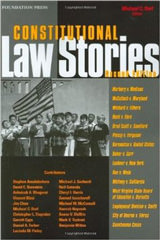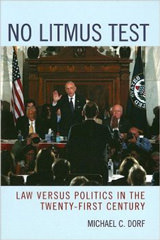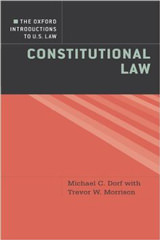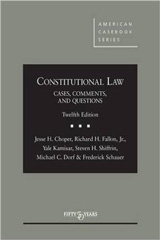President Ronald Reagan proposed a space-based missile defense system—officially called the Strategic Defense Initiative (SDI) but more commonly known as Star Wars—in 1983. It was touted at the time as a more humane, less dangerous, and saner alternative to mutually assured destruction (MAD), the doctrine that held that the capacity of the United States and its Cold War antagonist the Soviet Union each to annihilate the other many times over deterred both sides from actually using nuclear weapons. Surely it would be better, Reagan argued, for the U.S. to defend itself by shooting down incoming nuclear missiles than to threaten to kill untold millions of innocent civilians.
Despite the theoretical allure of missile defense, SDI was deeply flawed. It was hugely expensive, violated a treaty then in effect, and couldn’t work. Moreover, as I explain below, even if it did work, it would have increased rather than decreased the risk of nuclear war, because it would have incentivized a first strike.
Undaunted by that experience, President Donald Trump last week proposed a Star Wars sequel so terrible it might as well feature Jar Jar Binks. (Yes, I know that the films in which Jar Jar appeared were technically prequels. Get over it, nerds.) Although there have been numerous relevant technological advances since the 1980s, the fundamental flaws of SDI cannot be overcome. Trump’s “Golden Dome” missile defense system, if approved for funding by Congress, would waste money and likely decrease American security.
Why Missile Defense Still Won’t Work
Trump chose to name his proposed missile defense Golden Dome as a shoutout to Israel’s Iron Dome missile defense, which the U.S. helped fund and build. Iron Dome has been very successful in shooting down short-range missiles and rockets launched by Hezbollah from Lebanon and by Hamas from Gaza. It also worked reasonably well to prevent mass casualties from a missile attack by Iran last year. But there are key differences between the security threats Israel faces and those against which Golden Dome would need to respond.
Iron Dome is designed to protect population centers from short range conventional weapons. It focuses its firepower on rockets and missiles heading towards populated cities. It cannot and does not shoot down all incoming weapons. As a consequence, Israel considers it a success when a rocket or missile lands in an open field. But while a conventional weapon that explodes in an open field a few miles away from a city does little damage, the blast, heat, and radiation from the explosion of a 100-kiloton-or-larger nuclear weapon would extend for miles. Russia has thousands of such bombs. A missile defense system that shot down 99 percent of them would still leave the U.S. vulnerable to the slaughter of millions of civilians and the slow poisoning of tens or hundreds of millions more.
Indeed, there is reason to believe that even the most sophisticated missile defense system would be much more porous than that. Many Russian missiles contain multiple warheads, each independently targetable. They are, in missile jargon, MIRVed (for Multiple Independently Targetable Re-entry Vehicle). To be effective, a missile defense system would need to strike an incoming missile before it released the multiple warheads, which provides a short lead time; targets need to be hit when they are still in space or the upper atmosphere. For that reason, it has been proposed that Golden Dome would be satellite-based. But a satellite-based system is itself vulnerable to attack. An adversary that wished to strike the U.S. with nuclear weapons would first disable the satellites.
What about shooting down the warheads via a ground-based system after they separate from the main missile? That would require the deployment of hundreds of batteries of defenses that could be overwhelmed by a large attack, including one that used decoys: Russia, China, or another adversary could outfit its missiles with both warheads and dummies. A defense system would need to either distinguish between warheads and dummies or shoot down them all.
Meanwhile, the U.S. faces nuclear threats from submarine-launched missiles and potential threats from low-flying hypersonic missiles. A shield designed to hit ballistic missiles would provide little to no defense against bombs sent via these means.
Rogue State Defense?
When objections like the foregoing were lodged against earlier proposals for missile defense, advocates of such programs sometimes responded that while missile defense would be ineffective against a sophisticated adversary like Russia or China, it could be useful in thwarting an attack by a rogue state such as North Korea. The argument is not entirely off-base, but it assumes that North Korea would strike with ballistic missiles rather than suitcase bombs, low-flying cheap drones, dirty bombs, or other unconventional delivery devices.
In addition, even if building Golden Dome were justified to defend against a nuclear missile attack from North Korea (or Iran or some other rogue state), one must take account of the impact of deploying any missile defense system on the military thinking of sophisticated adversaries. Suppose that the U.S. developed and deployed Golden Dome but announced to the world that it was intended only to defend against an attack from the likes of North Korea. How credible would that assurance be?
A strategic planner in Moscow or Beijing would worry that the U.S. was planning a first strike. Why? Because a missile defense that works against an adversary with fewer than a hundred nuclear weapons (as North Korea has) could also work against an adversary whose nuclear launchers have been hit, disabling them before any missiles take to the skies.
During the Cold War and even through today, the U.S. and its principal potential adversaries (first the Soviet Union, now Russia and China) had incentives to build gigantic stockpiles of nuclear weapons so that they would have the capacity to deliver a devastating second strike: even if a very high percentage of the stockpile was hit before launch, there would be enough surviving missiles to inflict such heavy damage on the first striker as to deter such a strike in the first place. However, if the party launching a first strike has a pretty good missile defense, it might not be deterred. For that reason, the period just before deployment of such a missile defense system is incredibly dangerous: during that period, an adversary may worry that if it does not launch its own first strike it will lose the ability to credibly threaten a retaliatory strike.
To be sure, submarine-launched nuclear weapons are not vulnerable to a first strike, but that might not be enough to provide Russia and China sufficient assurance that any missile defense is not aimed at them or that the U.S. is not contemplating a first strike. Moreover, President Trump has indicated that Golden Dome would be designed to protect against nuclear weapons from major powers—although it is difficult to be certain because the only information about Golden Dome on the White House website consists of a short video and photographs of the Oval Office announcement.
In any event, suppose Trump were to announce unequivocally that the U.S. intends missile defense only against rogue states. That would not necessarily be reassuring to Russia and China. Even generally honest national leaders have been known to dissemble about their national security goals and strategy, and Trump himself has frequently said that he favors unpredictability in the conduct of international relations because he believes it gives the U.S. a strategic advantage. And beyond all of that, given Trump’s particular penchant for lying, no potential adversary would take anything he said at face value.
* * *
The dream of a missile shield is noble. Other things being equal, surely it is better to deploy a shield than a sword in self-defense. But other things are not equal. Star Wars, even rebranded as Golden Dome, remains science fiction. It is at best a huge waste of money and at worst a new danger.











